MID-ECAL, 3rd year students projects, 1st semester 2006-2007
Following the workshop organised last november (27.11-01.12.2006) with Rachel Wingfield about ornamentation, interaction and patterns, three groups of 3rd year Media & Interaction Design students from ECAL have continued their projects until the end of last semester.
They continued to work around what they had started to do during the workshop, even if the notion of pattern design and/or the relation to natural cycles became less important for some projects. They had to focus on the strenght of each project, discussing with professionnals about their potential realisation and taking into account new contexts of realisation.
In the three following posts, those projects (Traffik, Espace Pur, Thermawall) will be shortly presented.
Posted by patrick keller at 17:49
ESPACE PUR, anti-dust & ionizer "screen"
ESPACE PUR
by Marc Hottinger & Lucien Iseli (MID-ECAL)
-
Espace Pur is an air ionizer that uses dust as pixels and that displays patterns thanks to it, in a very slow motion way. It cleans and purifies the air in architectural spaces. It increases the level of oxygen’s negative ions contained in the ambient air. Once installed, the air’s oxygenation becomes nearly the same as in the mountains. The more there are negative ions, the more the air is purified.
As a matter of fact, excessive dust is dangerous for health. Nevertheless, no dust at all decreases our immunity. That's why the system is regulated by the saturation of dust. Once filled with dust, the display is deactivated, and dust can be cleaned on the floor.
The installation of the "anti-dust screen" can take place in flats, hospitals, offices, and everywhere where air needs to be cleaned.
The aim of the project is therefore to capture dust and organize it on wall panels in order to build pictures that will gently appear on the wall. The panels are displaying compositions of weed that are on the one hand harmful plants but on the second hand have beneficial aspect on the health.
---------------------------------------------------------------------
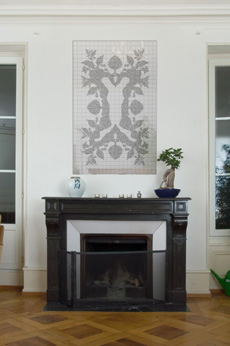
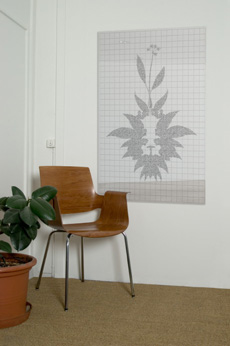
-
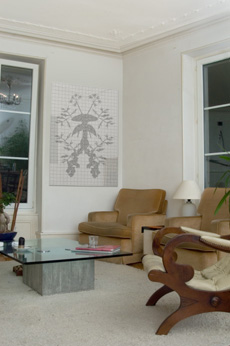
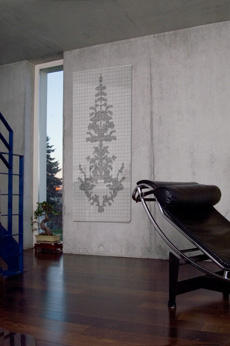
-
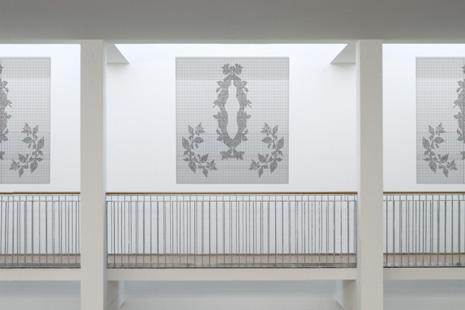
---------------------------------------------------------------------
Download a pdf presentation about the project, including pattern design researches
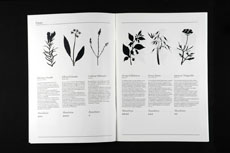
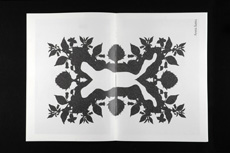
Or check the video (very slow motion! flash video, 8 min) about the "air ionizer"


Posted by patrick keller at 17:46
THERMAWALL, thermal wallpaper
THERMAWALL
by Vincent Jacquier et Guilhem Moreau (MID-ECAL)
-
Thermawall is a set of thermal wallpapers. Once applied on the walls of a room, they give people a sense of the climatic/warm-cold conditions inside this space thanks to the evolution of their visual outputs. The patterns and possibly colors on the wallpapers evolve according to the climatic conditions that occur inside that room (or human activities that have an impact on micro-climatic conditions).
The inks used on the wallpapers are set to trigger specific patterns on predefined threshold temperature, the variations from summer to winter being taken into account. The quick time response from the material enables anyone to fully interact with the wallpapers' patterns and illustrations, wich have been designed using "feng shui" as a starting point.
Regarding the visual choices driving the design of the wallpapers, we've chosen shapes and patterns representing several main "elements" or "matters" : water, fire, wood, air and earth so to confront them between each other and to highlight their antithetic relations.
Ultimately, the all project acts as a room display that shows the effects of one person or a group of persons activity/ies on its surrounding and could be perceived as a visual comment on the "global warming" problem.
---------------------------------------------------------------------
Have a look to the set of pictures presenting the wallpaper's book or download it's pdf version (17mb).
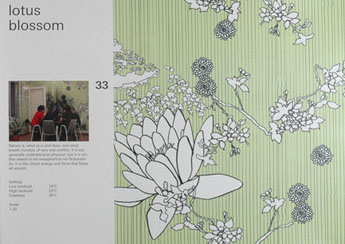
-
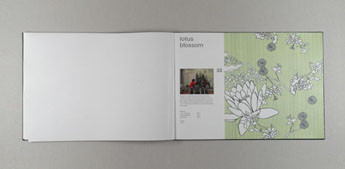
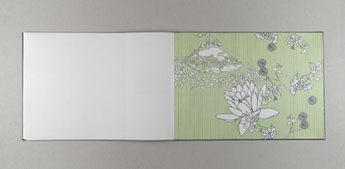
-
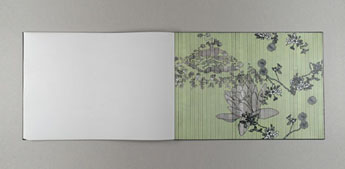
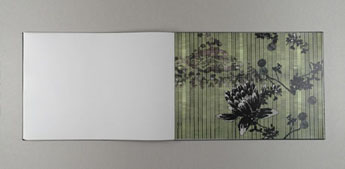
-

-

---------------------------------------------------------------------
Check Thermawall's video (flash video, 2 min).
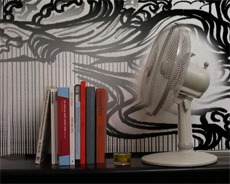
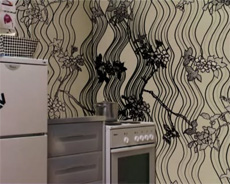
Posted by patrick keller at 17:44
TRAFFIK, experimentations with speed and typography
TRAFFIK
by Lionel Tardy & Gregory Aegerter (MID-ECAL)
-
Traffik is a visual experiment dedicated to the display of animated informations (speed limit, distance, name) on highways and that takes advantage of car speed to display message for drivers. Without any screen, just with "fresh painting", some optical games (anamorphosis) and a typographical work (a decomposition of the swiss typography for highways and national roads).
A bit more than forty years ago, the first highway in Switzerland got into function. The first one was the one who linked Geneva to Lausanne (and still do). At the same time, the major elements for road signalisation were build up by Adrian Frutiger, with his famous typography : Die Schweizer Authobahn.
This typography is made up of parts and fits very well for our experiment. By using every parts of each letter, "deconstructing" and placing them at different distance from each other, we can create words that are only readable at a specific speed. Add to this an anamorphic distortion so that the driver or passenger can perceive the text as flat (like a projection on the windshield) and the display rules are in place.
Our work consists here to analyse each word, split and rebuild it in a way that it becomes readable at a desired speed.
---------------------------------------------------------------------
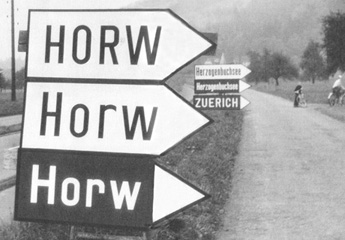
-
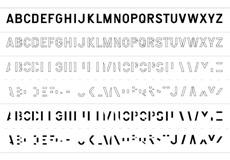
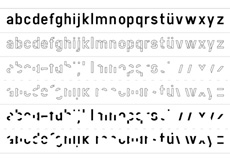
-
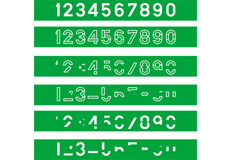
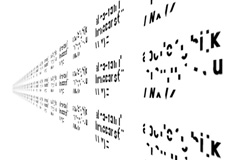
-
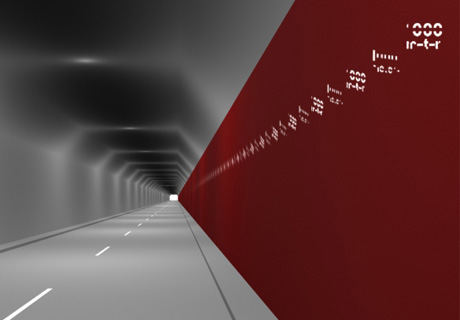
---------------------------------------------------------------------
Check to discover more about Traffik in this PDF edition (9.3mb) or in the flash video animation that illustrates the "speed graphics" principles.
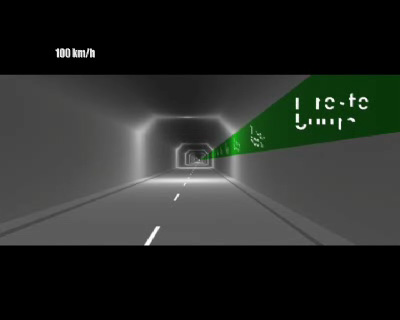
Posted by patrick keller at 17:42
Environnements mobiles augmentés
*Environnements mobiles augmentés* est un projet de semestre avec des étudiants de 2ème année en communication visuelle de l'ECAL.
Contexte: Dans les laboratoires de recherche de l'EPFL, on expérimente de nouvelles interfaces qui mêlent espaces physiques et électroniques. Ces interfaces permettent en particulier d'intégrer des objets numériques 3D dans un environnement réel par le biais de signes graphiques prédéfinis. Ces signes peuvent préexister ou être disposés dans l’espace, sur des objets, dans les pages d’un livre, etc. Le lieu, les signes qui s’y trouvent et les objets numériques forment ainsi une nouvelle réalité: mixte. Dès lors, de nouvelles possibilités de lier une information électronique à un lieu ou un objet émergent, par exemple d'associer un contenu dynamique à un espace donné (environnements de travail, lieux culturels, espaces de loisir, etc.).
Projet: Par groupes de 3 les étudiants ont conçu leur environnement mobile augmenté. Ils ont exploré les possibilités d’extension électronique de leurs objets mobiles (contenu de sac à dos, sac à main, poches, etc.), puis défini une famille de signes associés à ces objets et créé le contenu électronique 3D liés à ces signes.
Télécharger la donnée (format PDF)

Technologie de réalité mixte développée à l'EPFL
Ce projet est bénéficie de la collaboration de David Marimon du laboratoire EPFL-LTS
Pour tout complément d'information concernant ce projet: christophe.guignard@ecal.ch
Posted by christophe at 18:42
Cosmo Lab
Projet: *Environnements mobiles augmentés*
Etudiants: Tonatiuh Ambrosetti, Noémie Demal, Siméon Reymond
Concept: Un système de réalité mixte est proposé par la Cosmo Entreprise à tous ses employés. Il s’agit de préserver un espace de travail neutre, tout en offrant la possibilité à l’employé d’investir ce lieu de façon tout à fait privée, et invisible aux yeux de ses collaborateurs ou superviseveurs.
Un certain nombre de signes standards, inclus dans chaque espace de travail, pourra être associé à une banque d’images propre à chaque employé. Ainsi lorsque l’un de ces signes, standards, entrera dans votre champ de vision, une image, personnelle, correspondante apparaîtra.
En effet, le système propose d’atténuer les tensions au sein du bureau, en incorporant un univers propre à chacun de façon tout à fait invisible aux yeux des autres.
Pour ce faire, vous devez vous rendre au bureau du personnel, munis de votre banque d’images, au format gif. Un informaticien se tient à votre disposition pour associer les signes standards à
vos images personnelles. Celui-ci est bien entendu tenu par une charte de confidentialité; aucune information ne sera ainsi divulguée.
Néanmoins, le bureau se garde le droit de contrôle et de sanction, si des images à statut répréhensible par le code pénal étaient présentées.
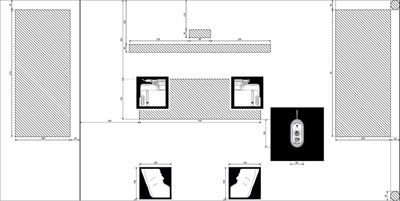
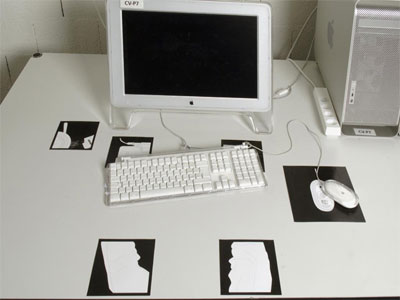
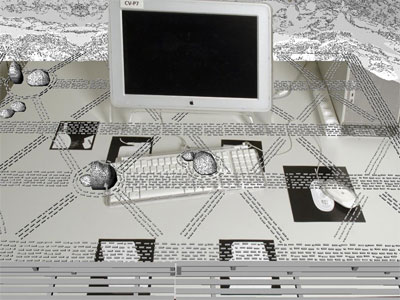
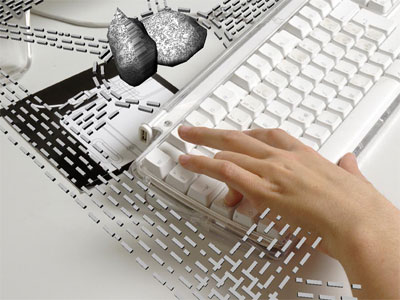
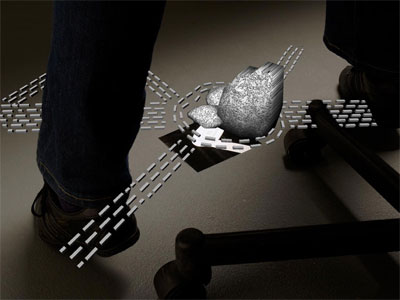
Télécharger la plaquette de présentation de Cosmo Lab (format PDF)
Posted by christophe at 16:36
Skating Wall
Projet: *Environnements mobiles augmentés*
Etudiants: Gilles Magnoni, François Pirenne, Valerio Spolettini
Concept: Skating Wall repose sur une mise en relation entre le monde du jeu vidéo et du skate. En nous basant sur le mouvement physique des skaters ainsi que sur les figures qu’ils accomplissent, nous avons développé un dispositif composé d’un mur recouvert de signes et d’une webcam filmant le mur et relié à un écran.
Ce dispositif permet d’afficher sur l’écran une «réalité augmentée» des skaters réalisant leurs tricks. En effet, à l’aide d’une interface informatique, l’image des skaters est «commentée» par des tags affichés en surimpression et révélant la valeur des tricks réalisés devant le mur.
Les signes recouvrant le mur sont issus du jeu vidéo et des manipulations que le joueur doit effectuer sur sa manette. Le lien entre ces deux mondes nous semble pertinent car ils appartiennent tous deux à une même génération et sont en concurrence directe dans les loisirs de la jeunesse… sans compter qu’il repose sur une même systématique – réaliser la meilleure performance et
ainsi décrocher le plus haut «score».
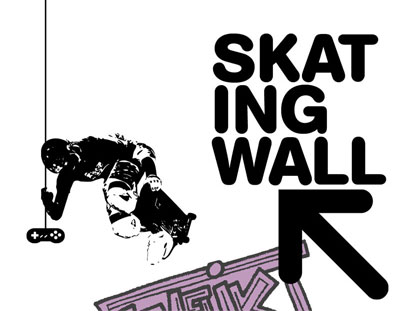
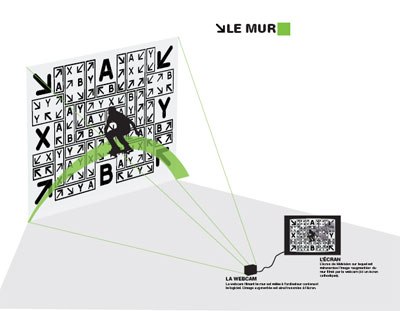
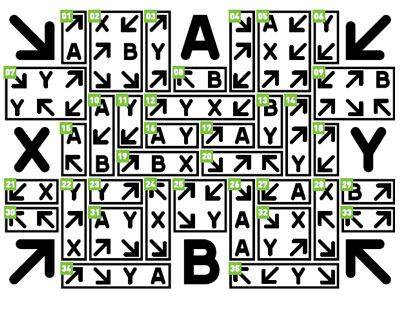
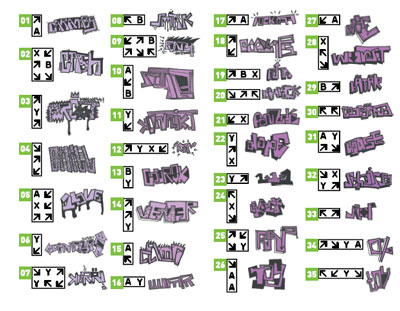
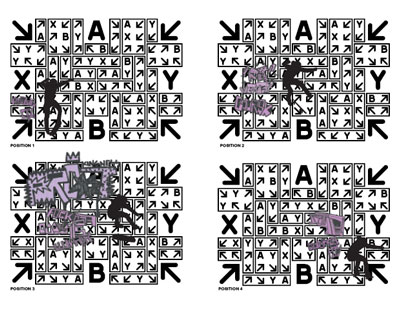
Posted by christophe at 16:06
Augmented street skating
Projet: *Mobile Game*
Etudiants: Valentin Kissling
Concept: Augmented street skating

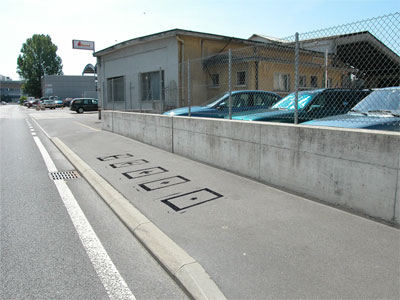
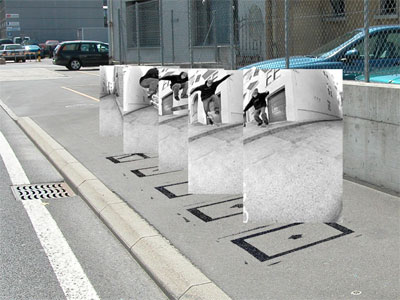
Posted by christophe at 15:51
Escape Saver
Projet: *Environnements mobiles augmentés*
Etudiants: Sarah Buchilly, Lucia Calviño, Emilie Cornu
Concept: Escape Saver vous permet d'organiser votre espace de travail et vous aide à communiquer avec vos amis lors de vos absences via une webcam qui filme en permanence votre espace de travail. Lorsque vous quittez votre place de travail, Escape Saver s'active: selon les objets manquants sur votre table, Escape Saver envoie aux personnes connectées au système les informations qui leur sont associées sous formes d'images ou d'objets 3D. Ainsi vos amis distants peuvent se faire une idée de vos activités, lorsque vous emporter tel ou tel objet. Escape Saver fonctionne comme un "screen saver" spatial.
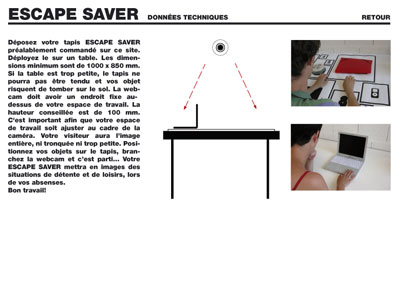
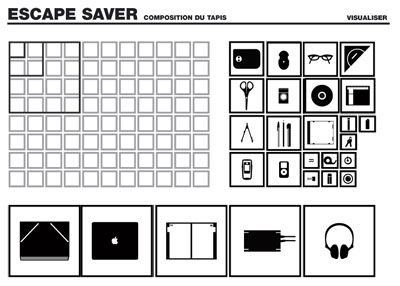
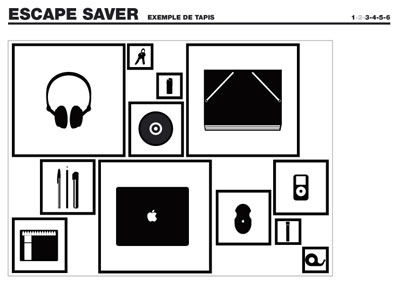
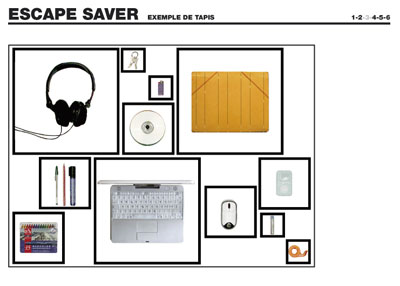
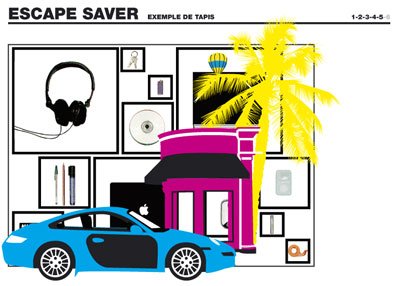

Posted by christophe at 15:26
Ragorama
Projet: *Environnements mobiles augmentés*
Etudiants: Maud Fässler, Lyne Friedrich, David Stettler
Concept: Ragorama ou le panorama augmenté
Notre objet est la longue-vue que l’on trouve dans les villes à caractère touristique. Ces longues vues n’apportent pas énormément
à notre vision du panorama. Elles ne font que zoomer et ne donnent
aucune information pratique ou historique.
Nous avons décidé d’amener l’animation de la ville sur le haut des
bâtiments. Puisque le spectateur ne peut pas voir la rue, il peut en
avoir des bribes. Grâce à l’interaction du réel et du virtuel, on plonge dans un univers parallèle. Le jeu qui se crée aléatoirement entre questions,réponses et visages permet au spectateur de se construire une narration, jamais la même, entre le ragot et l’absurde.
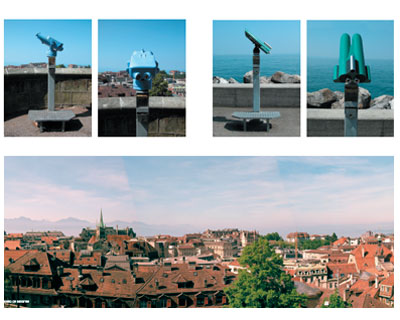
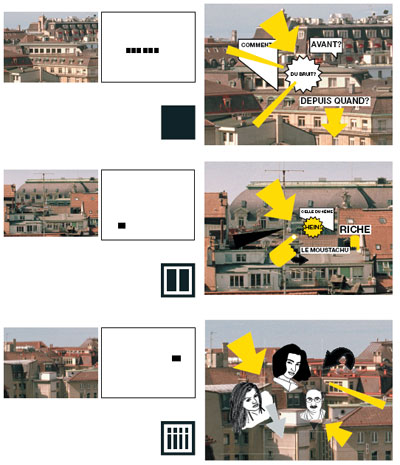
Posted by christophe at 12:25
Hotel Montesano
Projet: *Mobile Game*
Etudiants: Mathias Forbach, Gaël Vuillens
Concept: Création de fictions à partir d'un jeu de photographies d'un hôtel abandonné. Les séquences d'images et leur position sur le tabelau de jeu créent un récit inédit lors de chaque partie.
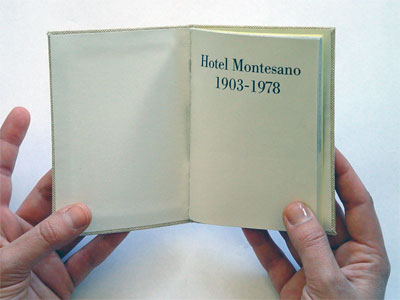
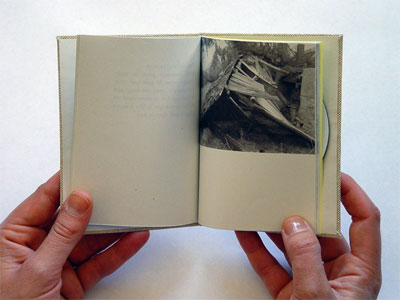
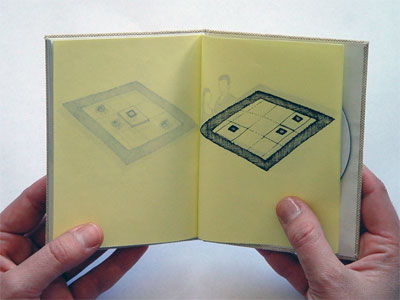
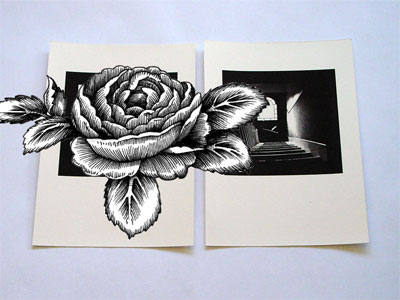
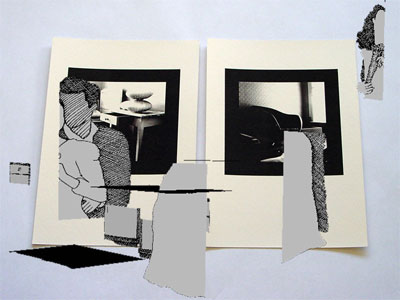
Posted by christophe at 12:00
Livre générique
Projet: *Environnements mobiles augmentés*
Etudiants: Nazareno Crea, Erol Gemma, Florence Tétier
Concept: Livre générique

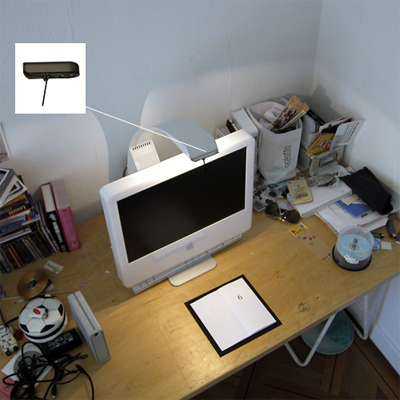
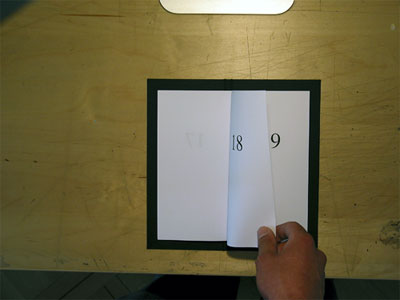
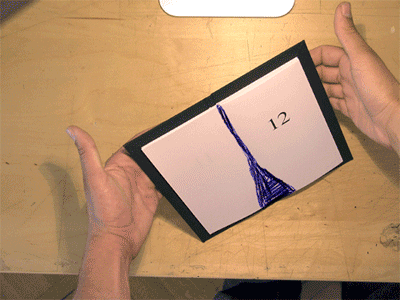

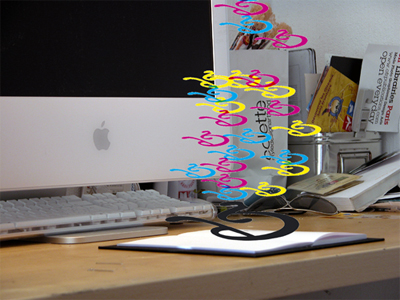
Posted by christophe at 11:46

























































